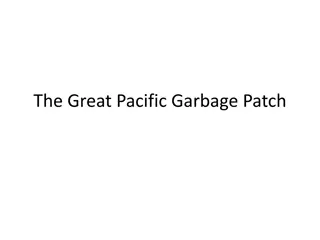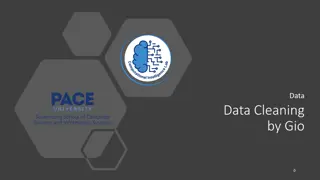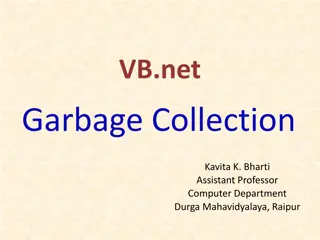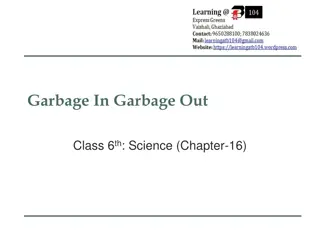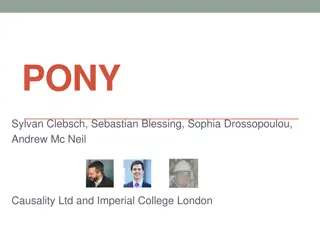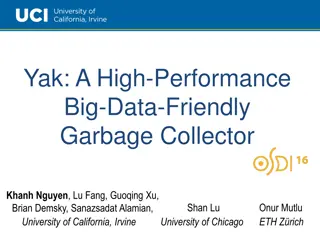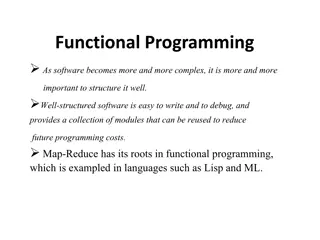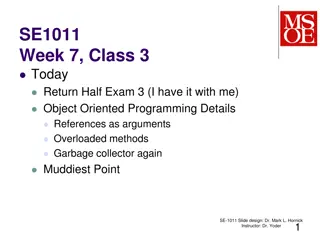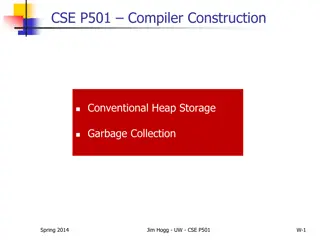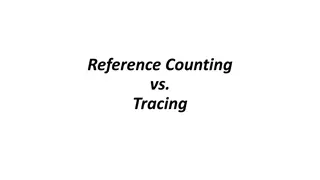Understanding Garbage Collection in Programming
Garbage collection automates memory reclamation, freeing programmers from manual memory deallocation tasks. This process enhances program reliability, reduces errors, and decouples memory management from other software engineering concerns. Originating in LISP in 1960, garbage collection has become a fundamental aspect of modern programming in languages such as Java, .NET, Haskell, JavaScript, PHP, Perl, Python, and Smalltalk. Memory management in programs involves static and dynamic allocation methods, with managed languages like Java and .NET utilizing garbage collectors to automatically handle memory. The terminology associated with memory management includes the heap, garbage collection, mutator, mutator time, and GC time.
- Garbage Collection
- Memory Management
- Programming Languages
- Automatic Memory Reclamation
- Software Engineering
Download Presentation

Please find below an Image/Link to download the presentation.
The content on the website is provided AS IS for your information and personal use only. It may not be sold, licensed, or shared on other websites without obtaining consent from the author. Download presentation by click this link. If you encounter any issues during the download, it is possible that the publisher has removed the file from their server.
E N D
Presentation Transcript
Introduction to Garbage Collection
Garbage Collection It automatically reclaims memory occupied by objects that are no longer in use It frees the programmer from manually dealing with memory deallocation The benefits of garbage collection increased reliability decoupling of memory management from other software engineering concerns Less developer time spent chasing memory management errors 2
Garbage Collection Garbage collection was introduced in LISP [McCarthy, 1960] and it has gained popularity through Java and .NET It is also included in languages such as Haskell, JavaScript, PHP, Perl, Python, and Smalltalk Today garbage collection is ubiquitous Garbage collection is an integral part of modern programming languages 4
Memory Management Programs require data to execute and this data is typically stored in memory Memory can be allocated statically where memory requirements for the data are fixed ahead-of-time on the stack where the lifetime of the data is tightly bound with the currently executing method dynamically, where memory requirements are determined during execution potentially changing between individual executions of the same program
Memory Management Dynamically allocated memory can be managed either explicitly or automatically by the program Popular programming languages, such as C/C++ require the programmer to explicitly manage memory through primitives malloc and free for C tedious and error-prone. Managed languages, such as Java/.NET use a garbage collector to automatically free memory
Terminology The area of memory used for dynamic object allocation is known as the heap The process of reclaiming unused memory is known as garbage collection, a term coined by McCarthy Following Dijkstra, from the point of view of the garbage collector, the term mutator refers the application or program that mutates the heap Mutator time -the time when the mutator is running GC time - the time when the garbage collector is running
Terminology Collectors that must stop the mutator to perform collection are known as stop the world collectors Concurrent collectors reclaim objects while the application continues to execute Collectors that employ more than one thread to do the collection work are parallel collectors. A parallel collector can either be stop the world or concurrent Some collectors require knowledge of the runtime roots, all references into the heap held by runtime including stacks, registers, statics
GC Fundamentals Algorithmic Components Allocation Identification Reclamation Sweep-to-Free Tracing (implicit) Free List Compact ` Reference Counting (explicit) Bump Allocation Evacuate 3 1 11
Contiguous Allocator Increment a bump pointer by the size of the object Better cache locality Contemporaneously allocated objects on same/nearby cache lines Touches memory sequentially priming the prefetcher Fewer instruction per allocation Efficient bulk zeroing to pre-initialize objects 12
Free list Allocator Organize memory into k size free lists Allocate into a free cell in the smallest size class that fits Suffers from fragmentation Internal (objects not matched to size of their cell) External (free cells of particular size exists but requires different size) Poor cache locality Contemporaneously allocated objects often on different cache lines Higher instruction per allocation Object by object zeroing to pre-initialize objects 13
Tracing [McCarthy1960] Roots B A D C E F 14
Reference Counting [Collins 1960] Roots 1 1 1 2 1 0 1 2 1 15
GC Fundamentals Canonical Garbage Collectors Mark-Sweep [McCarthy 1960] Free-list + trace + sweep-to-free Sweep-to-Free Compact Mark-Compact [Styger 1967] Bump allocation + trace + compact ` Evacuate Semi-Space [Cheney 1970] Bump allocation + trace + evacuate 16
GC Fundamentals The Time Space Tradeoff Time Space 17
Mark-Sweep (Free List Allocation + Trace + Sweep-to-Free) Mutator Minimum Heap Space efficient Poor locality Time Space Space Garbage Collection Total Performance Space Simple, very fast collection SemiSpace MarkCompact MarkSweep Time Time Space 18
Mark-Compact (Bump Allocation + Trace + Compact) Mutator Minimum Heap Good locality Space efficient Time Space Space Garbage Collection Total Performance Expensive multi-pass collection SemiSpace MarkSweep MarkCompact Time Time Space Space 19
Semi-Space (Bump Allocation + Trace + Evacuate) Mutator Minimum Heap Space inefficient Good locality Time Space Space Garbage Collection Total Performance MarkSweep MarkCompact SemiSpace Space inefficient Time Time Space Space 20
Sweep-To-Region and Mark-Region Reclamation Sweep-to-Free Mark-Sweep Free-list + trace + sweep-to-free Compact Mark-Compact Bump allocation + trace + compact Evacuate Semi-Space ` Bump allocation + trace + evacuate Mark-Region Bump alloc + trace + sweep-to-region Sweep-to-Region 21
Mark-Region (Bump Allocation + Trace + Sweep-to-Region) Mutator Minimum Heap Good locality Space efficient Time Space Space Garbage Collection Total Performance Excellent performance Space Space MarkSweep MarkCompact SemiSpace Immix Simple, very fast collection Time Time 22
Nave Mark-Region 0 Contiguous allocation into regions Excellent locality For simplicity, objects cannot span regions Simple mark phase (like mark-sweep) Mark objects and their containing region Unmarked regions can be freed 23
Generational [Ungar 1984] Most objects die young Nursery space Mature space 24
Immix [Blackburn and McKinley 2008] recyclable lines object mark line mark block 0 line Contiguous allocation into regions 256B lines and 32KB blocks Objects span lines but not blocks Simple mark phase Mark objects and containing regions Free unmarked regions Recycled allocation and defragmentation 25


